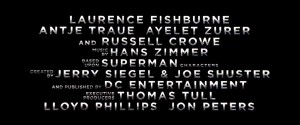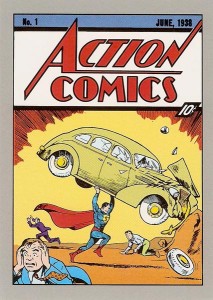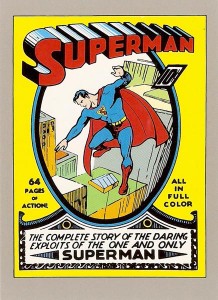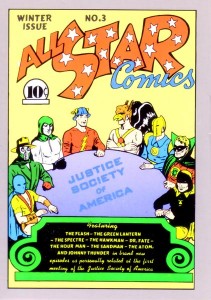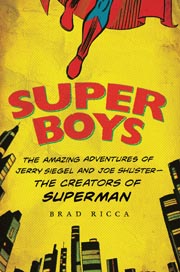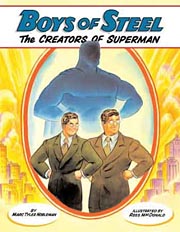From time to time, I will post a roundup of posts and links from around the web that are of definite interest or worth a read, but perhaps not directly enough connected to Jerry Siegel and Joe Shuster themselves to merit an individual post.
On Dec. 11, the first full-length trailer for “Man of Steel,” the newest big-screen interpretation of Siegel’s and Shuster’s most-famous creation, was released. While only related to Siegel and Shuster and their work on Superman inasmuch as, hey, they created him, both of their names are listed big and bold in the credits at the end of the trailer.
Times sure have changed. Siegel and Shuster were not listed among the credits in the original theatrical teasers or trailers for “Superman: The Movie.” In fact, as has been oft-told elsewhere, it was the production of that movie that was a major catalyst to the events that ultimately lead to Siegel and Shuster getting their credit added to the movie and restored to the comics.
As a big-screen interpretation of Superman tries to chart a new flight for the first time in years, it’s great seeing them both credited from the get-go.
Over at his blog, 20th Century Danny Boy, Daniel Best has put together an interesting post talking about a circa-1938 order in Australia that labelled DETECTIVE COMICS and a handful of crime and detective pulp magazines as “literature calculated to encourage depravity.” The label resulted in the magazines being banned and barred from being imported into the country.
Jerry Siegel and Joe Shuster had two regular features running in DETECTIVE COMICS at the time, “Spy” and “Slam Bradley.” There is no indication from Best’s post that either strip was directly responsible for the ban; it seems the objection was more towards the content of the magazine as a whole. However, one line is eye-catching.

The line stating that “the alleged Comics at the latter end of the book are included, it appears, only as an adjunct to the main theme of crime, and the title of the publication is calculated to deceive the purchaser as to the contents” is noteworthy because “Slam Bradley” was, in all but a few cases, the final feature in each issue. “Spy” bounced around a bit more, but usually was positioned in the approximate center of the issue, though farther back in earlier issues.
One wonders if the customs officials weren’t looking for reasons to ban the magazine, given that the complaint seems to be that the crime stories have either too much crime… or not enough. Either way, even though the Siegel and Shuster features might not have been directly responsible, they were certainly effected by it, and it makes for an interesting footnote in the history of their work.
Over at the Fortress of Baileytude, Michael Bailey has posted two of the “Famous Covers” cards from the 1991 DC Cosmic Cards trading card set. The cards highlight the iconic covers to ACTION COMICS #1 and SUPERMAN #1, both illustrated by Joe Shuster.
Click on over to the Fortress of Baileytude for a look at the back of each card, which talks more about the comics.
Also included in the set was another “Famous Covers” card highlighting ALL-STAR COMICS #3, which featured the first meeting of the Justice Society of America, including the Spectre, a character co-created by Jerry Siegel.
The cover was illustrated by Everett E. Hibbard, but the six-and-a-half page Spectre sequence inside, despite what the card’s back says, is thought by many comics historians to have been written by Siegel.

